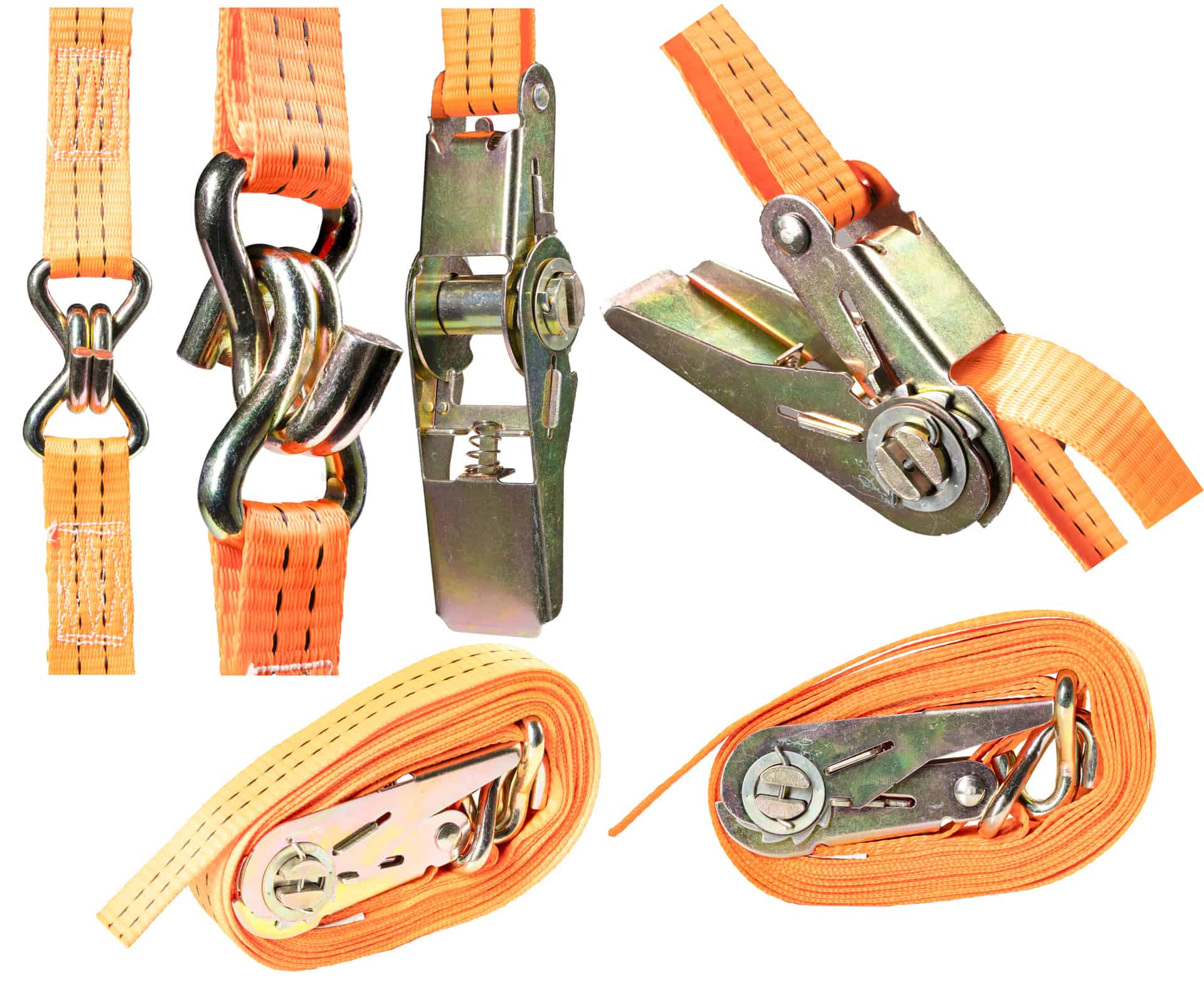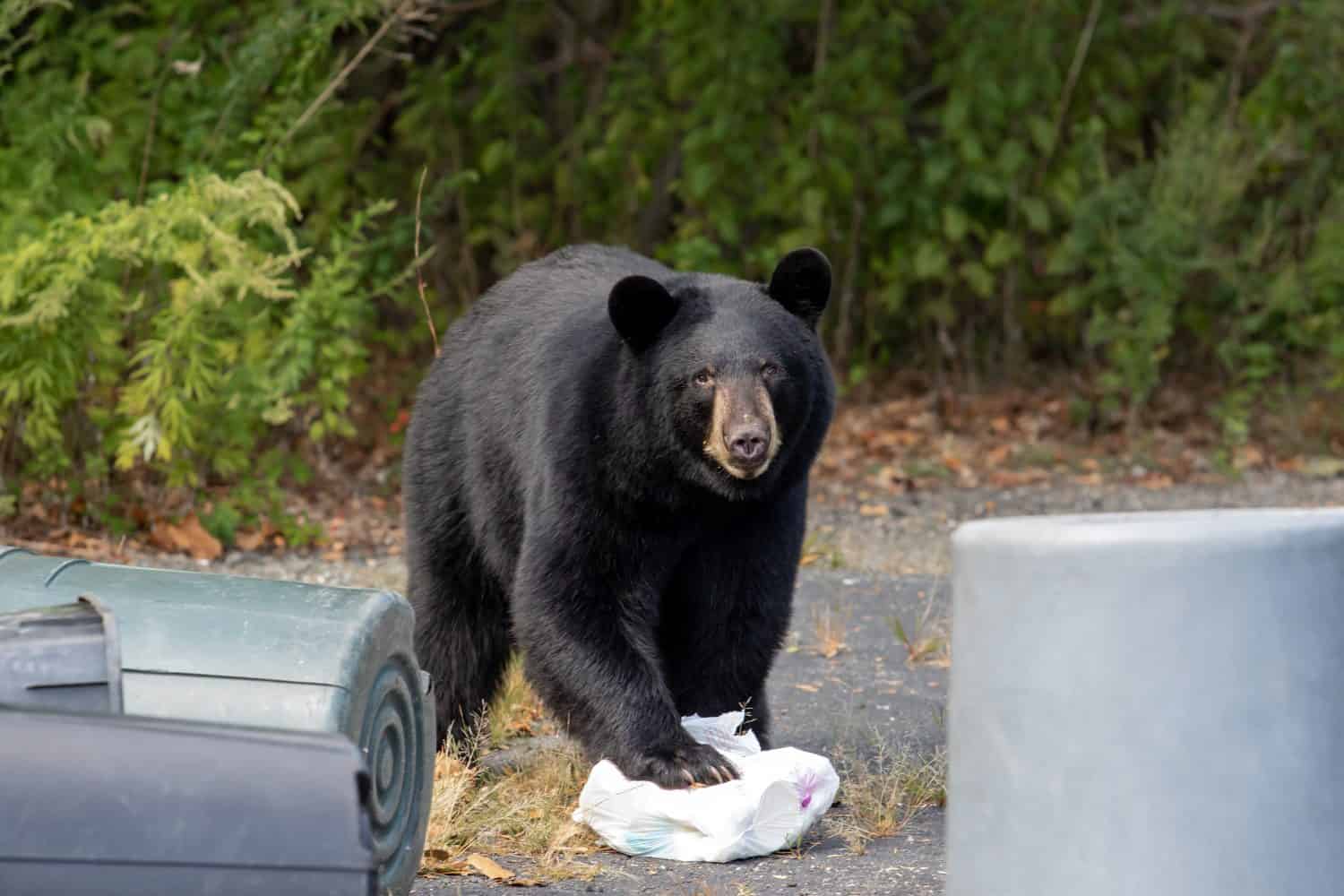From Smokey Bear, warning us of the dangers of wildfires to Yogi constantly in pursuit of a beloved picnic basket, there is no shortage of cherished and iconic bears sprinkled throughout American history. However, the reality of our increasingly overlapping habitats can be significantly less cute when they’re littered with garbage from the neighborhood trash cans.
In North America, there are three types of bears: black bears, brown bears, and polar bears. The most commonly encountered bear in the United States is the American black bear, which is found in an estimated 41 of 50 states. As omnivores, these massive mammals eat a variety of foods, including insects, fish, nuts, fruit, and honey. However, they are often opportunists. Bears commonly take advantage of food sources as they become available, and that includes your garbage cans. Keep reading to learn the four most effective ways to bear-proof your trash cans.
Keep Trash Cans Locked Up and Away From Bears

Keep garbage cans secured in a garage, shed, or other enclosure if possible until garbage day.
©PIKSEL/iStock via Getty Images
One of the easiest ways to keep your trash cans safe from bears is to minimize the time wildlife can access them. It’s best practice to keep your cans safely secured in a garage, shed, breezeway, or heavy-duty enclosure full-time. Then, only move your trash can to the street on garbage day or as close to pick-up time as possible. By creating a small window for animals to dig through your cans, you’re minimizing your risk of having a messy cleanup waiting for you. Additionally, keep all garbage securely inside the can with the lid fully shut, and have trash collected regularly enough that your cans are not habitually overly full. An overflowing mess becomes an easy drive-thru for our forest friends.
Take Precautions to Minimize Temptations to Curious Critters

Food scraps that give off a strong scent can lure bears and other wildlife to your trash can.
©Candle Photo/iStock via Getty Images
The old saying goes that a bear can smell a pine needle falling in the forest. How strong is a bear’s sense of smell, exactly? Bears can detect scents easily a few miles away — at least! So, last night’s salmon dinner leftovers in your garbage can easily seem like a mouthwatering treat to hungry bears. To reduce the risk of food scraps luring in a new furry friend, try minimizing odors as much as possible. Get into the habit of waiting to empty out your fridge and freezer until just before taking out the garbage. This helps to minimize decay and reduces strong odors as much as possible. Also, if you have fowl-smelling garbage, such as used cat litter, try keeping it close to your food waste. This can help mask the smell of any snacks for our oversized scavengers.
Add Some Reinforcements to Keep Trash Safely in Your Can

Something as simple as adding ratchet straps to the outside of your trash can may be a deterrent to wildlife.
©Piotr Wytrazek/iStock via Getty Images
You keep your cans locked up, but tomorrow’s garbage day. If you’re concerned about the neighborhood sleuth of bears, there are reinforcements available to help bear-proof your trash can. The easiest solution includes an item many homeowners already have. Use several ratchet straps wrapped around your can to keep the lid firmly closed. If that isn’t an option, you could instead use a couple of the many lid-locking straps available online. Lastly, Louisiana Wildlife and Fisheries has created an easy instruction manual on how to bear-proof your can. This method uses items easily found at your local home improvement store, such as double-hinged safety hasps and carabiners.
While these solutions are great deterrents, don’t forget that some bear species can grow up to a massive 2,000 pounds. While these items are convenient, they may meet their match if encountered by a hangry bear. Nothing is 100 percent guaranteed to keep Bear Force One at bay.
Leave It to the Pros – Purchase a Trash Can Designed to Keep Bears Out

Even the most expensive bear-resistant cans can sometimes fail.
©EleanorAbramson/Shutterstock.com
Finally, if you aren’t a fan of DIY, you can leave it to the professionals to bear-proof your trash can. Instead of reinforcing your own, consider purchasing one specifically designed to keep critters out. Companies such as Bearicuda and TuffBoxx offer a variety of residential trash cans designed to deter wildlife. If you need a more heavy-duty receptacle or trash can enclosure, Bear Saver sells more serious options. However, before investing in these hefty solutions, keep in mind that many of these cans and covers are considered “bear-resistant.” These solutions may work for some, but check the warranties of any “bear-proof” products to ensure you fully understand your financial investment.
Summary Table of the 4 Most Effective Ways to Bear-Proof Your Trash Cans
| # | Ways to Bear-Proof Your Trash Cans |
|---|---|
| 1 | Keep Cans Locked Up and Away from Bears |
| 2 | Take Precautions to Minimize Smelly Temptations to Curious Critters |
| 3 | Add Some Reinforcements to Your Can to Keep Trash Safely Inside |
| 4 | Leave It to the Pros – Purchase a Trash Can Designed to Keep Bears Out |
Thank you for reading! Have some feedback for us? Contact the AZ Animals editorial team.








